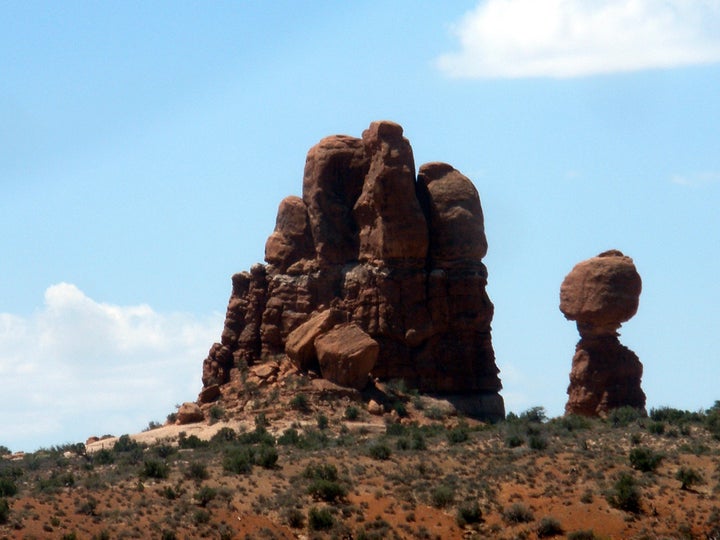
Summer is a time when American families plan vacations. Many are centered on the natural beauty of our country and the National Parks System. However, what many tourists may not anticipate is that the destination of their journey is being impacted by air pollution in the form of soot and haze, despite laws that were put into place as far back as the 1970s.
In 1977, there was strong bipartisan support in Congress to mandate the restoration of air in 156 of the country's national parks and wilderness regions. There were given the designation of Class 1 Areas. It was the responsibility of the Environmental Protection Agency (EPA) to adopt rules to prevent these locations from deteriorating further.
Under President George H. W. Bush, the 1990 Clean Air Act Amendment was passed, specifically targeting regional haze. So what's the problem? A major piece of the equation is aging power plants and industrial sites that haven't installed the emission control technology called for in 1977.
Particle pollution-- otherwise know as haze -- and soot have reduced visibility in American's hallowed recreational spaces where visitors to a single location can top 9 million people annually. Jeffrey Olson, a National Park Service spokesperson told me, "People don't come to National Parks expecting air pollution."
Mary Anne Hitt, who focuses on clean air at the Sierra Club said, "There are coal plants very close to several national parks and they are major contributors to particulate pollution." Having grown up near the Great Smoky Mountains National Park, Hitt understands the impact of pollution. "Beyond the aesthetics," she said, it's a pocket book and health issue." She referenced the dependence of local communities on the dollars generated through tourism. "If people go to a park and they can't see a view, something's wrong," she said. Despite the ongoing resistance from coal and utility interests, Hitt believes that haze is a "solvable problem."
Staff attorney for Earthjustice, Paul Cort, gave me background on the role of the EPA in enforcing the law. He explained the obstacles presented by offenders -- predominately out-of-date coal fired plants that haven't adopted scrubbers or other readily available technologies. He mentioned the Four Corners Power Plant on Navajo Nation land in New Mexico, and its contribution to haze pollution and soot. "We have to rethink basic questions about our outdated energy system," Cort emphasized. "It has to be about pursuing renewables and getting off fossil fuels."
Mark Wenzler, Vice President for Climate and Air Quality programs at the National Parks Conservation Association, told me emphatically, "We don't want to let this opportunity go by. Our parks should have clean air. If we don't do this now, it will never get done." Wenzler talked about the importance of this issue for all Americans. He lamented that it has taken over three decades to achieve the original objectives laid out in 1977. Lawsuits have been brought against the EPA in efforts to push the process along. Wenzler told me. "The EPA must implement the laws and the current administration is doing its best -- while experiencing a lot of pressure. They came in after eight years of outright hostility to environmental concerns, especially clean air."
Wenzler said, "By 2063, the air will be clean if the law is implemented and followed. If it's not, it could take one hundred years. The more we stall, the longer it will take," he said. Wenzler urges the public to demand that their states and the EPA take action on antiquated coal-fired power plants. "We just need to fully enforce the laws on the books," he concluded.
I contacted the Grand Canyon Trust, a non-profit advocacy group for the Colorado Plateau. I spoke with Roger Clark, Director of the Air and Energy Program. Clark outlined how certain plants, similar to Four Corners, were built in the 1960s and 70s to provide cheap power to explosively growing cities like Phoenix. At that time, there was little to no understanding of the ramifications and impact they would have on the Grand Canyon and surrounding localities. Clark said, "The power plants threaten the integrity of one of our nation's most treasured places. We have a region rich in resources, but when they are extracted, they harm the environment and people." He supports "sustainable economic development" such as "local farming and ranching," along with "renewable energy projects." Clarke summarized, "We want to see our region make a transition to a clean energy economy. It saves electricity, it saves lives, and it protects the Grand Canyon." He continued, "The Grand Canyon is the backbone of our economy and focusing on that just makes common sense."
There are too many days when park visitors are strongly warned, "Due to the air quality, strenuous exercise such as hiking is not advised." As Cort noted, "It's a reminder that air pollution knows no boundaries."

Nitrous Oxide Being Emitted from the Navajo Generating Station
Photo Courtesy of Ted Grussing
This article originally appeared on the website Mom's Clean Air Force.
